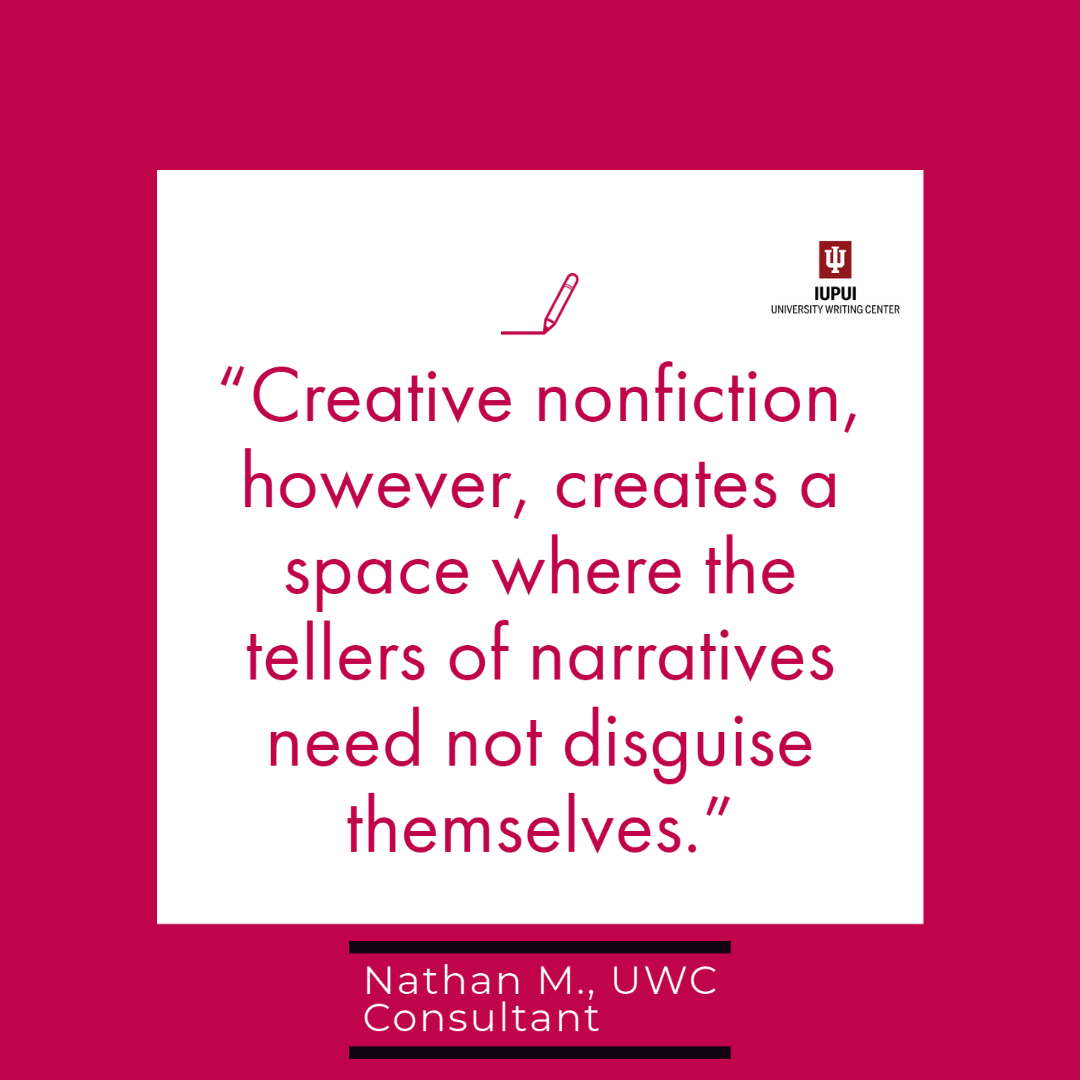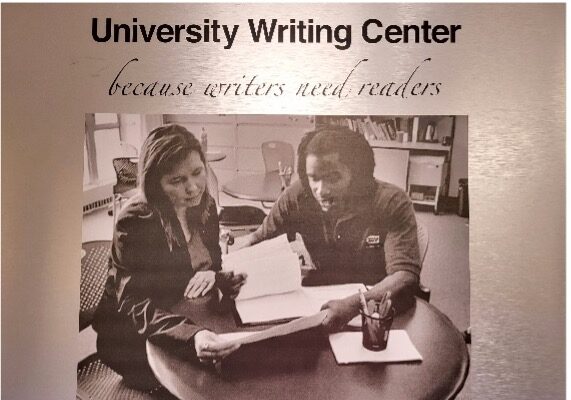By: Nathan M.
Back and better than ever! Our amazing consultant Nathan is back with part 2 of his nonfiction writing series. Be sure to look back at his first blog post before you read part 2!

In the last blog post, we determined that the only defining of creative nonfiction is that it’s somehow based in truth. But what is truth? It turns out, that’s a pretty complicated question. Philosophers, historians, and rhetoricians have been talking about and complicating the idea of “truth” for as long as it’s been an idea that existed to be complicated.
Basically, in a nutshell: truth isn’t singular, even (and especially) in nonfiction texts that are not classified as creative. Hayden White points out that all history is in some way narrativized, told. In his book The Content of the Form, he says “Real events should simply be; they can perfectly well serve as the referents of a discourse, can be spoken about, but they should not pose as the tellers of a narrative” (p. 27). He goes on to say that objectivity is a construct; an intentional removal of allusions to the teller’s perspective rather than the removal of the perspective itself.
Creative nonfiction, however, creates a space where the tellers of narratives need not disguise themselves. The term “creative nonfiction” might lead some people to believe that those who write it are taking liberties with the truth, but creative nonfiction texts are often radically honest about what has shaped their narrators’ perspectives. The creative nonfiction world is not without its scandals. For example, see James Frey’s book A Million Little Pieces, which was first marketed as a work of creative nonfiction then later acknowledged to be a fictional story based on real events. Many of the things Frey wrote in the book were true; arguably, his story of overcoming addiction and learning to live a meaningful life was based in his own lived reality. However, Frey failed to acknowledge the ways in which he stretched or disregarded the truth, claiming to have spent far longer in jail than he actually did, among other things.
Scandals like Frey’s make life harder for creative nonfiction authors. The human memory is something of a sieve; how far can we stretch the truth before it stops being truthful? But author Eileen Pollack’s response to this is simple; she says that yes, the concept of truth is complicated, but you still know when you’re lying. Small details misremembered and lost to the sands of time do not disqualify the core of your piece; large, exaggerated deviations from the truth of your own memory do. If I’m writing about something that’s well-known enough that different recollections from different perspectives are available, I might choose to read those things to inform my perspectives. In the course of writing the memoir I’m working on right now, I even find myself digging through journals, blogs, and poetry that I wrote when I was younger.
In going through this archive of my adolescent years, I’ve discovered that even our own personal truths are complicated and multi-faceted. The conclusions I drew as a fifteen-year-old and the conclusions that I draw now about the same events are vastly different, but I don’t know if the memoir I’m writing would be more or less true if it were being written by my former self. Perhaps there are simply different truths. That being said, the voice that’s narrating my memoir isn’t exactly me; it’s a version of me, certainly, but it too is a creation of and a vehicle for the particular truths I want to explore.
In moments where I haven’t had the ramblings of my fifteen-year-old self to jog my memory, I’ve found one particular writing exercise helpful. First, I set a timer for five to ten minutes and write down everything I remember about the thing I’m writing about, often using the repetitive sentence structure “I remember…” for each fact that I manage to pluck from my memory. Next, I set a timer for five minutes and write down everything I don’t remember. I’ve found that the things my memory chose to erase often reveal a lot that I wouldn’t have otherwise been aware of.
All in all, understanding what truth is and means within creative nonfiction is tricky business, but less so when we understand that all narratives are created and objectivity is a construct. Creative nonfiction gives us the freedom to acknowledge this, to approach the essays that we write as our whole, embodied selves.
What can creative nonfiction teach us about writing as a whole? What does it mean that we section it off as “creative”; isn’t all writing creative? Stay tuned for part three.
Follow us on social media to get alerts about the next blog post in this series as well as new posts weekly!

